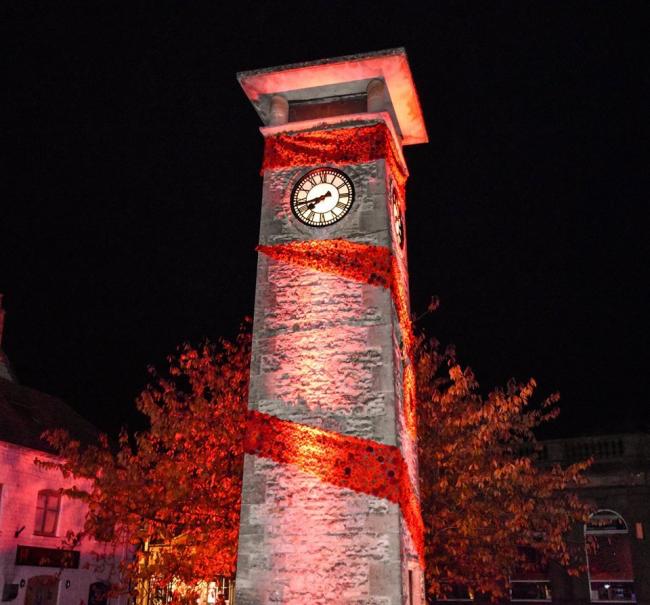Today, Sunday, November 11, the nation marks the 100th anniversary of the armistice, when the guns finally fell silent and First World War ended.
Although peace negotiations continued for some time afterwards, the German surrender of 1918 signalled the close of hostilities that had cost the lives of 10 million military personnel.
Its anniversary has been marked with great reverence every year since.

Nailsworth Remembers. Photo: Dave Calverly
Every second Sunday of every November, crowds gather around the Cenotaph in London to lay tributes, say prayers and hold solemn silence for those who died.
It is a tradition that is entrenched in our national conscience, and one that began back on November 11, 1920, when the Cenotaph, an official dedication to those who fell in the First World War, was unveiled by King George V.
But for all its grandeur and ceremony, this monument is only one of tens of thousands of memorials across the UK, and the world.
The other memorials may be smaller, but they often sit in the heart of the towns and villages who were shattered by the Great War.

Tetbury Remembers. Photo: Stephen J Payne
Visit anywhere in Britain or the Commonwealth today, and they are still there, name after name of friends, husbands, brothers, fathers and sons.
Wreaths of poppies, the symbol of remembrance and hope, are placed on the monument or stone inscribed with the names of those who were lost.
The red poppy is the other equally enduring symbol of remembrance too - a flower that thrives on disturbed soil, and soon covered the battle-scarred grounds of Western Europe.
John McCrae first marked its significance in his 1915 poem, In Flanders Fields, and the idea of it as a memorial was first adopted by the American Legion in 1920, then taken up by the British Legion the following year.

Slimbridge Remembers. Photo: Paul Nicholls
That original sale of poppies raised £106,000, nearly £30million in modern money, for the survivors and bereaved of the Great War.
Now poppies are worn by the children, grandchildren and great-great grandchildren of those who fell, and help to raise on average over £35million each year.
Many of those who marched out of Britain have faded.
However, much-cherished photographs of those men who marched off to the Flanders and elsewhere in those terrible years before November 11, 1918 remain.
Over the course of this important anniversary we will be sharing pictures and the stories behind some of those who gave their lives, to remind us all of the great sacrifices made on our behalf just three or four generations ago.
- Please send us any photos and comments you have, so that they can be included in our coverage of today's events.





Comments: Our rules
We want our comments to be a lively and valuable part of our community - a place where readers can debate and engage with the most important local issues. The ability to comment on our stories is a privilege, not a right, however, and that privilege may be withdrawn if it is abused or misused.
Please report any comments that break our rules.
Read the rules here